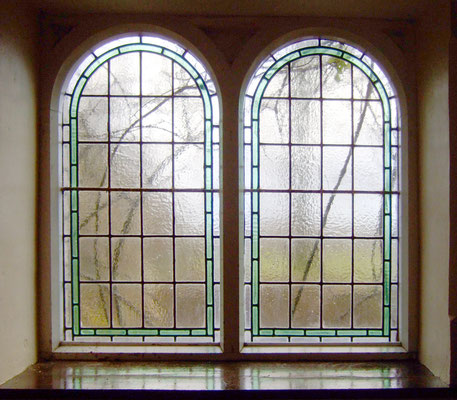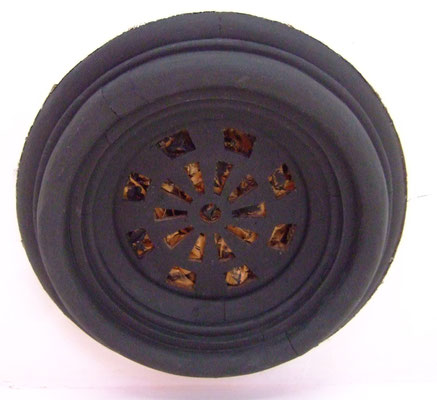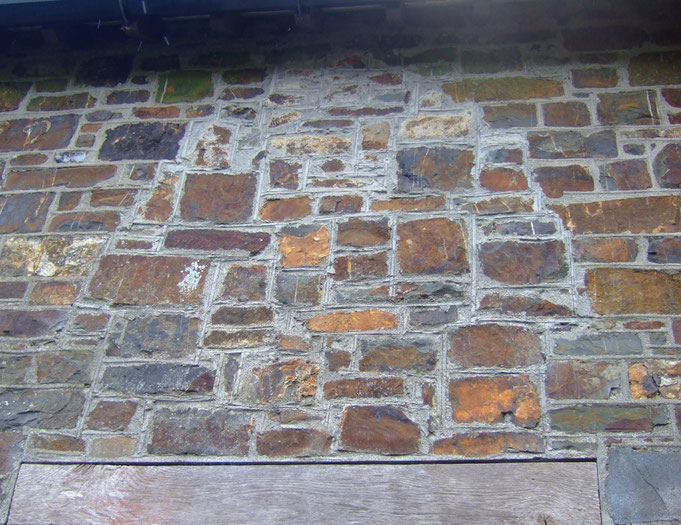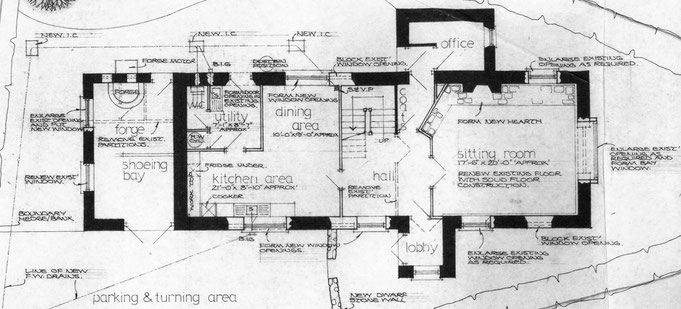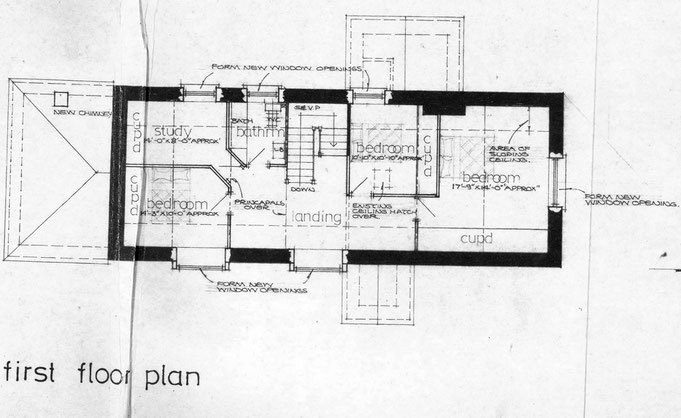Thorn Cross Baptist Chapel in the 1980 sales particulars
Foundation
Prior to the establishment of the Thorn Cross Baptist Chapel in 1881, Baptists had been meeting in Broadwoodwidger for some forty years. For some seventeen years, they had been meeting quarterly at nearby Coombe. Then, some three years previously, there had used a room at Kellacott to hold a service on Sunday afternoons and one evening a week and then, a year later, had taken ‘Camp Cottage’, which is about one hundred yards from Cross Green, for these purposes (Western Morning News, 3/6/1881). ‘Camp’ was the home of farmer, George Bickle, his wife, Elizabeth and their family and, whilst only Elizabeth became a member of the chapel, there are references in minutes to a Mr Bickle being asked to speak at various other Baptist chapels. By 1881, the Baptists felt confident that they could afford to erect and maintain a proper place of worship, but it was probably no coincidence that this decision was taken so soon after the foundation of Thorn Cross School in 1880 (see BWW Schools page). This School (and that of Ivy House) had been built in relatively isolated positions because of the requirement on the School Board to provide schools within three miles walking distance of all parishioners. With the Parish Church of St Nicholas being a good distance away, the local Baptists no doubt perceived a potential opportunity for new recruits. By providing a place of worship close to the school, they hoped to increase the chance of their chapel being used by the school and of their Pastor being selected to provide religious education in the school, so as to attract to their sect a number of the pupils.
The land on which the chapel was built, which was a triangular section of fourteen perches, right on the junction at Thorn Cross, was donated by the yeoman, James Smale (1829-1891). In the 1871 Census, he was recorded as living at Thorn Farm and farming 170 acres, but his first wife, by whom he had had seven children, died in 1878. He remarried in 1879 and settled with his new wife in Spry Town, near Lifton, describing himself in the 1881 Census as a ‘Retired Farmer’, albeit then aged just 52. Thorn Farm was now run by his eldest son, Edwin Smale, then 28, and his siblings. The plot’s attraction for the Baptists was that it lay on the junction of the roads to Broadwood, Ashwater and Launceston, but, from the Smale family’s viewpoint, as it was a piece of a field entitled ‘Three-Cornered Marsh’, it was unlikely to have been very productive.
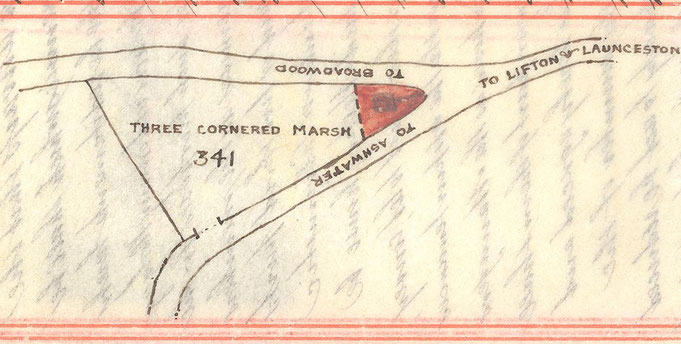
Plan from 1881 Conveyance
The initial set of Trustees, by whom the land was held, came from varied backgrounds and, in some instances, resided some distance away. They were George Parker (Lifton, Pastor), Richard Peter (South Petherington, Auctioneer), Henry Gardner (St Thomas, Launceston, Draper), James Jessop Palmer (Lifton, Merchant), Richard Veysey Bray (Ashwater, Merchant), Charles Veysey (Ashwater, Schoolmaster), Thomas Rich (Broadwoodwidger, Blacksmith), Edwin Smale (Broadwoodwidger, Farmer) and James Wivell (Broadwoodwidger, Farmer). Upon the land was to be built a chapel or meeting house “to be used as a place of public religious worship by the Society of Protestant Dissenters called Particular or Calvinistic Baptists”. This sect now tends to be known as Reformed Baptists.
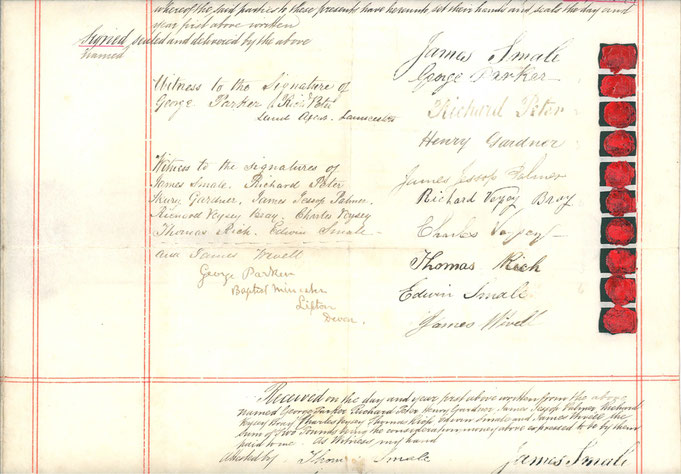
Signatures and seals of Trustees from 1881 Conveyance
The Conveyance into the names of the Trustees was completed on 2nd June 1881 and, that very afternoon at 3 p.m., in the presence of a crowd of some 150 people, the foundation stone was laid by the President of the Devon Baptist Association, Rev. J.W.Ashworth of George Street Chapel, Plymouth (Cornish & Devon Post, 4/6/1881). After the ceremony, tea was provided in Thorn Cross School, evidencing an early link between the two establishments. The chapel was said to be the first new Baptist chapel in the Lifton District since 1830 and was to be built by Mr White of Halwill at an estimated cost of £200. The chapel, which was intended to accommodate 100 people, was a rectangular hall, 32ft long, 21ft wide and 18ft high, built of local stone, and having tall, two light Gothic windows, with brick arches, and containing frosted glass. It was built on an east-west axis, with stables on the western end (into which toilets were subsequently incorporated). Internally, there was provided a rostrum and open seating of pitch-pine. Whilst a clause in the original Conveyance envisaged the possibility of also erecting on the land a dwelling house for the Pastor, this was not done, because the congregation was never sufficient to support its own Pastor.
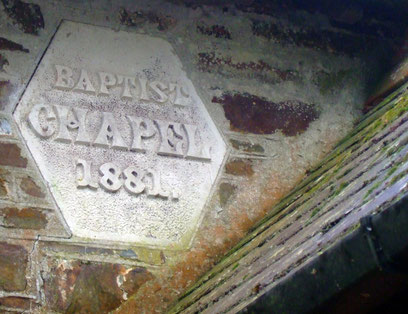
Retained stone foundation plaque
Early Years
The records of the Chapel held at the Cornwall Record Office, on behalf of the South West Baptist Association, are incomplete and there are few references to the chapel in the press subsequent to its foundation. The chapel was part of a circuit of four – Launceston, Lifton, Greystone (Lawhitton) and Thorn Cross – served by a single Pastor, who resided in Launceston. Quarterly meetings were held in each location and some minutes of these have survived. A list of Pastors, compiled in c.1919, indicates that those that served the chapel in its first decade were the Rev. John Wilson, the Rev. A E Johnston, Rev. Wheeler and the Rev. G. Parker. In 1886, the Rev. George Frankling Owen took over and this is confirmed by a report of an entertainment put on in November that year, where supporters included the Macbeth, Martin, Venton, Rich, Smale and Shopland families. The headmaster of Thorn Cross School, Philip Williams, who was lodging at the time with the Martin family at Cross Farm, was also involved (Cornish & Devon Post, 20/11/1886). In October 1889, there is mention of an auction to raise funds to support Owen’s successor, Rev. George Keen, “an evangelist preacher…who labours in a much scattered district comprising Lifton, Launceston, Thorn Cross and Greystone”, as congregations were insufficient to support him by themselves (Cornish & Devon Post 5/10/1889).
In 1890, it was determined to keep a roll of communicants and the initial families listed were the Trustee Thomas Rich, blacksmith, of Cross Green, Elizabeth Bickle of Camp, Mary Ann Brook of Thorn Cross, Richard Martin Snr (b.1831) and his wife, Susannah, of Cross Farm, Alexander Macbeth (farmer and J.P.) and his wife, Jessie, of Fernhill and their agricultural labourer, John Venton and his wife and daughter, Thomas Murley, a farmer, of West Kitcham, and Walter Hopewell, a young farm servant, whose family lived at Rexon, but who worked at Kitcham, seven members of the family of Thomas Andrew, farmer, of East Kitcham, William Osborn and Richard Gerry and his wife of Boldford Lane, Frederick Harris of Rexton, Thomas Richards of Upcott and three members of the family of George Brimacombe, farmer, of Downtown.
In 1891, additions were William Osborn’s wife and Richard Martin’s son, also called Richard (b.1864), whilst locals Mrs Charity Littlejohns and her son, Frederick, were added in January 1892. Frederick, who became a tailor like his father, John, was to prove one of the principal supporters of the chapel until his death in 1952.
The next Pastors were the Rev. H.Smart (1891-7), the Rev. C.J Leal (1898-1906), the Rev. A.E.Knight (1906-8) and the Rev. Daniel Dighton Bennett (1908-1918). The latter, who had been born in Paddington in c.1864 and had a Cambridge University degree, had served previously in Paignton (1900-8), and seems to have been one of the most inspiring Pastors of the chapel. In 1909, he realised that nothing had been done to alter the trustees of the 1881 Conveyance, of whom only three were still alive – Richard Veysey Bray, now retired and living in Okehampton, Thomas Rich, who now operated as a blacksmith in Altarnun and Edwin Smale. Newly appointed trustees were Dighton Bennett himself (St Thomas, Launceston), John Fitge (Westgate St, Launceston, Ironmonger), William Burchatt Knowles (Launceston, Timber Merchant), Richard Martin (Lower Rexton, Broadwoodwidger, Farmer), Frederick Littlejohns (Thorn Moor, Tailor) and John Andrew (Kitcham, Farmer).
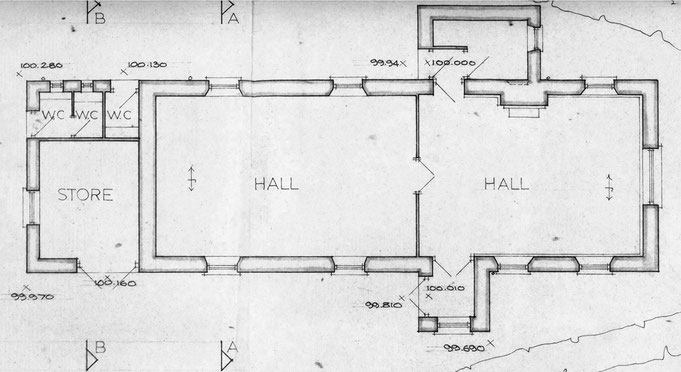
Floor plan showing on the right the additions made in 1914 of schoolroom, porch and vestry
Sunday School
There does not appear to be any record of when the Sunday School at the chapel was first established or to be any extant attendance log. However, one would imagine that, from the beginning, efforts were made to attract pupils of Thorn Cross School to a Sunday School at the chapel. In January 1902, the minutes of the quarterly meeting indicate that tenders had been requested for the erection of a schoolroom and new stables, but that the cost had been prohibitive and so the idea had been shelved. The first reference I have found in the local papers to the Sunday School is in 1904, when it mentioned that the Sunday School anniversary had been held in May. This anniversary became one of the principal features in the calendar and activities, in addition to sermons by visiting Pastors, included recitations by the schoolchildren, sports, trips out and plenty of food. In 1906, for instance, the children visited Plymouth, where they spent the morning on the Hoe and the Pier, whilst, in the afternoon, they had a trip to Saltash. Lunch, tea and dinner were all provided in the George Street Baptist Schools.
In 1909, there is the first mention in the papers of the annual Band of Hope Festival, and so this may also have been a Dighton Bennett initiative. This was a temperance movement aimed at teaching children the dangers of hard liquor and the benefits of sobriety. This again became one of the principal features of the calendar, being held in March.
Dighton Bennett’s impact can be gauged by the fact that, at the 1910 Sunday School anniversary, the crowds were so great at the chapel that, even with people standing in the aisles, there were still many who could not gain admittance (Cornish & Devon Post, 28/5/1910). The report of the 1912 event records a similarly enthusiastic crowd, which was unable to be accommodated.
Notwithstanding the interest aroused, the Roll of Communicants does not show any marked increase until 21st January 1913 when no less than eleven new members are recorded. These included Richard and Sabina Friend, who now farmed Fernhill, and their daughter, Carry. The momentum that Dighton Bennett had inspired led to the decision in 1914 to add to the chapel a Sunday Schoolroom, which was done by extending the chapel eastwards and incorporating into the new extension similarly styled Gothic windows. It was presumably at this time that a porch was added on the south side and a small room on the north side as a vestry and/or study for the teacher. The work was done by a local builder, John Davy, at a cost of £275. The decision was no doubt taken before the outbreak of War, but the new building was not opened until the end of October 1914. A portable screen divided the schoolroom from the chapel and this proved its worth at the opening, as the number of attendees at the chapel service was so great that they overflowed into the schoolroom.
Despite these endeavours, the Roll of Communicants in 1914 only listed some thirty people. Only five of these had been admitted prior to 1900 – Richard Martin Jnr (1891), his wife, Ellen (née Shopland) (1892), Frederick Littlejohns (1892) (and his wife, Florence), Miss Down (1897) and Mrs Rich (1898), who was probably Mary Rich, the wife of the farmer, Jethro Rich, of Higher Cross. In addition, there was the Trustee John Andrew of East Kitcham, the Friend family of Fernhill, Richard and Ellen Martin’s children, John (b.1896) and Elsie, John Shopland (b.1882), the younger brother of Richard Martin’s wife, who was also now living with his wife, Alice, at Cross Farm. There were also further members of the Littlejohns family – namely two children of another tailor, William Littlejohns of Boleford Lane, namely Frank Littlejohns, the local butcher, and another Frederick Littlejohns. There was also Misses Olive and Ivy Littlejohns. Other new members who were to prove long-term supporters included Claude Pearce, Ivy Reed (later Murrin) and the Misses Davey.
Post-WW1
Clearly, the War impacted severely on the enthusiasm that Dighton Bennett had aroused, particularly as he himself spent time with the Y.M.C.A. in France. Extant records of the chapel in the inter-war period are minimal. In the years 1922-4, there were some new enthusiastic additions to the Roll of Communicants and these included Edwin Littlejohns and his wife of Cobham Farm (possibly now Cobden Farm), Mrs Brimacombe and Job and Mary Newberry. Job Newberry had been bought up at Kitcham but had farmed for a number of years at Downicary, where he had been one of the principal teachers at the Sunday School attached to the Wesleyan Chapel. He appears to have retired back to the Thorn Cross area but died in November 1925, whilst talking to friends at Launceston Railway Station (reported, of all places, in Hartlepool Northern Daily Mail, 27/11/1925 at p.2). Edwin Littlejohns also died shortly afterwards in 1928 and the list of mourners at his funeral reveals how much the families associated with the chapel had intermarried over the years. One of his daughters had married into the Martin family and the Bridgmans were cousins. Such intermarriage was natural in an age where people still tended not to move far from their birthplace and where chapel would have been one of the social events of the week.
At the 1928 Band of Hope concert, when the Pastor was the Rev. W.H.Hughes, it was stated that there were 45 members, which was felt to be excellent for a small chapel. In 1930, there was a reference to a travelling evangelist minister, the Rev. A. Monk, who arrived with his wife in a caravan and held a series of revival meetings at the chapel with great success (Western Times, 9/5/1930).
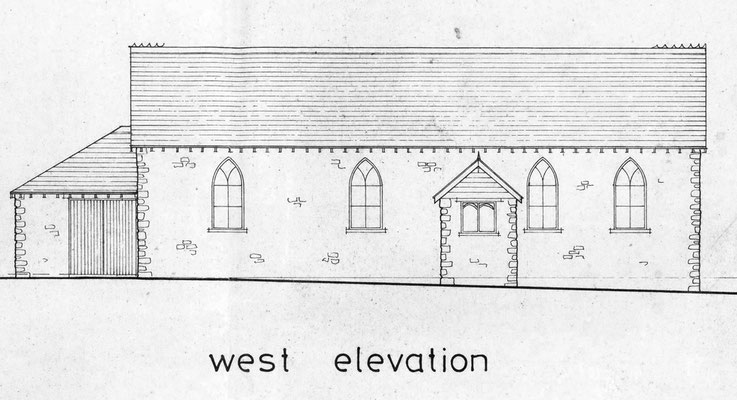
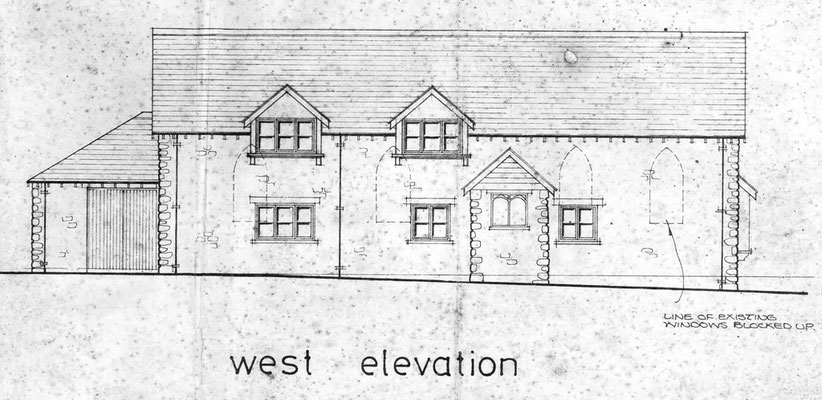
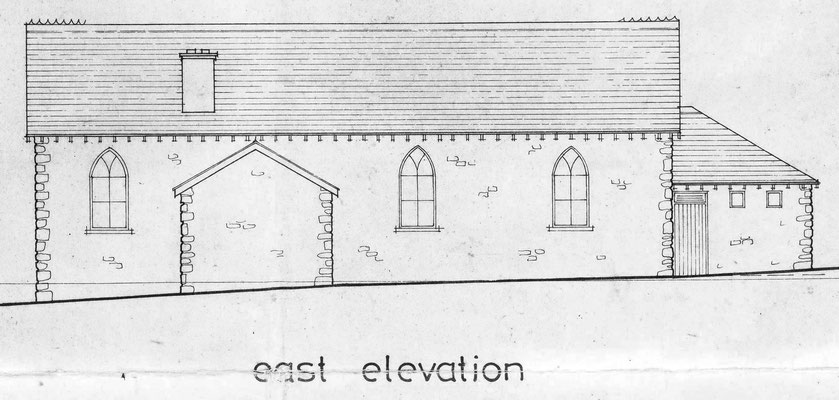
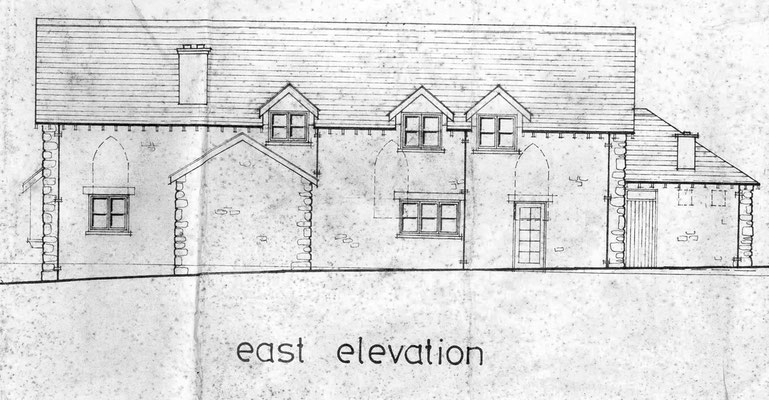
There is then a telling lack of records or reports until a Roll of Communicants is drawn up in 1949, which lists just eight people – Frederick Littlejohns (1892), his wife (1906), Mrs Worden (née Davey) (1908), Mrs Ivy Murrin (née Reed) (1913) and her husband (1915), Claude Pearce (1913), and Mr and Mrs S. Martin (1915) of Lower Rexton. With Thorn Cross School having closed in 1946, the future of the chapel must have seemed pretty bleak, particularly following the death of stalwart, Frederick Littlejohns, in February 1952. However, in March 1953, probably as a result of a specific revival effort, ten new communicants were admitted – Mrs Joyce Kelson of Lower Cross, Mr and Mrs Davey of Thorn Moor, Mr and Mrs Lancaster of West Kitcham, Mr and Mrs Hamley and their two daughters and Miss Betty Heard, all of Kellacott.
After the 1909 Appointment of New Trustees, no other action was taken to keep the trustees of the Conveyance up to date and so in 1952, when all the Trustees appointed in 1909 had died, the property was vested in The Devon Baptist Association Corporation Ltd, which in 1967 changed its name to The Devon & Cornwall Baptist Corporation Ltd.
The chapel continued for another generation, but there are no extant records of this period. However, by 1980, just before the chapel could celebrate its centenary, the congregation at the chapel had reduced to a level, where it was decided to close. The property, marketed by Kittows of Launceston, was sold for £11,600 to farrier, Steven Luxton, who obtained planning permission to convert it into a residential home, with the old stable and toilet area being converted into a forge. It is for that reason that the property is now known as ‘Thornmoor Forge’, as opposed to, say, ‘The Old Chapel’. At that juncture, such chapels were not listed and so the Gothic windows were removed, albeits traces of some of them can still be seen in the stonework. Original features from the chapel that have been retained are few but include the original ceiling/roof vents and, in the front porch, the front door, the windows and part of a bench and, in the vestry, its door and window. The conversion obviously required the insertion of a new first floor, which was to feature three bedrooms, a study, and a bathroom – and a distinctively spacious landing area. On the ground floor, there was a large sitting room in the old schoolroom, and kitchen, dining room and utility in the chapel area. The images of the plans, before and after, show the extent of the alterations.
The site of the forge is now used as a workshop by the current owner, Jessica Rance, who repairs woodwind instruments.
David Tovey
